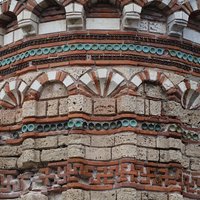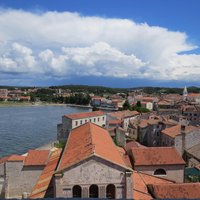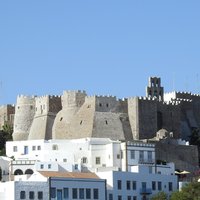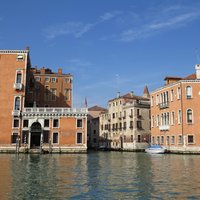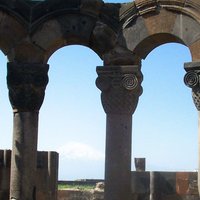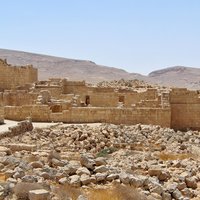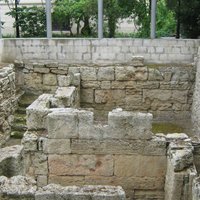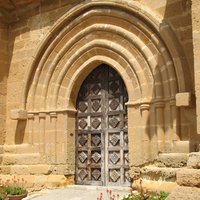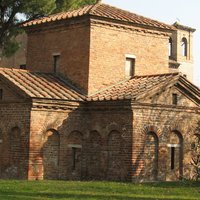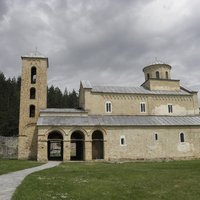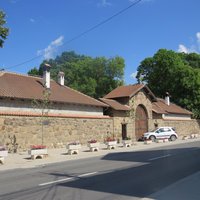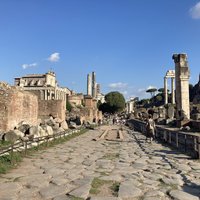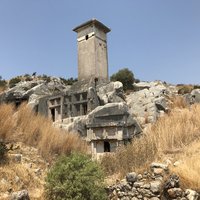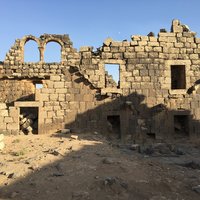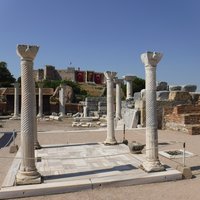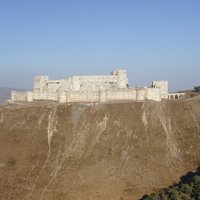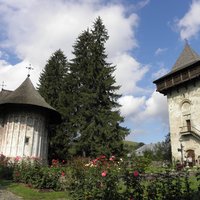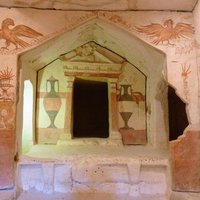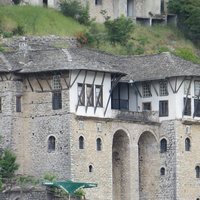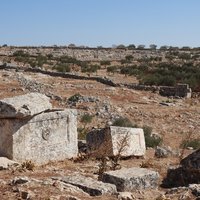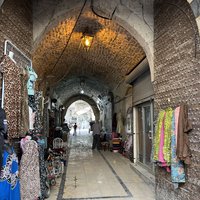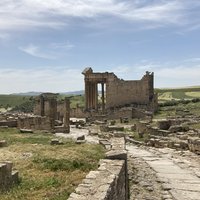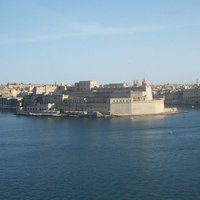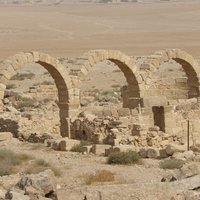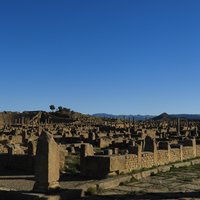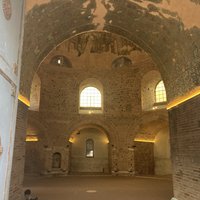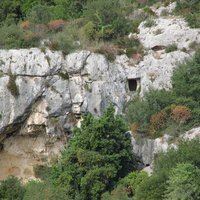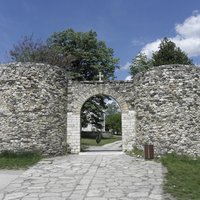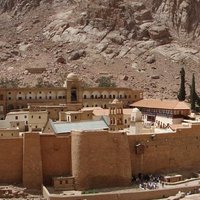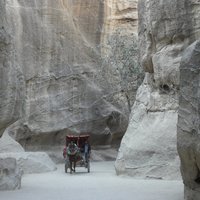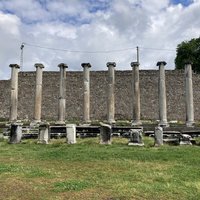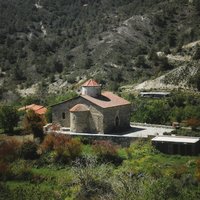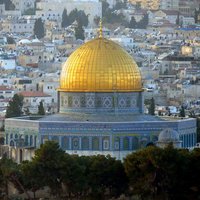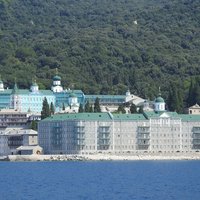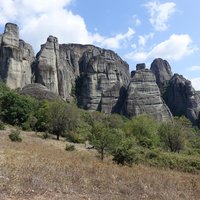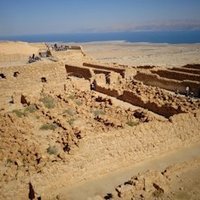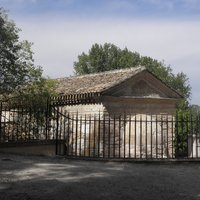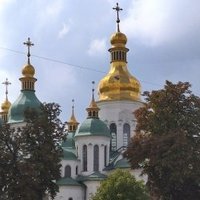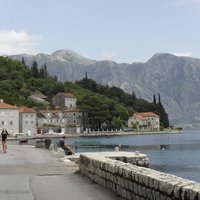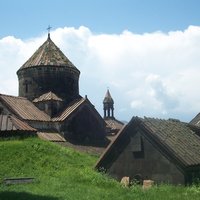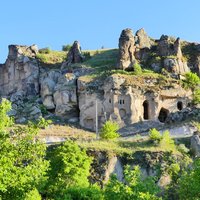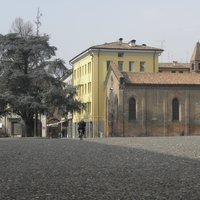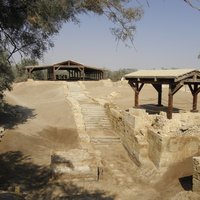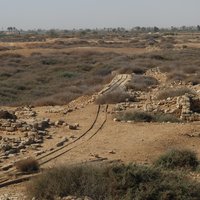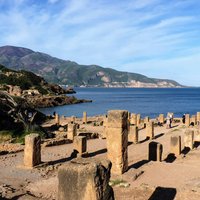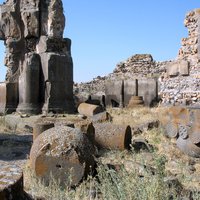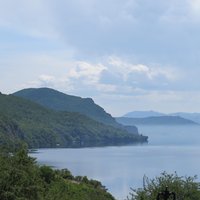Connected Sites
-
It was one of the most important strongholds of the Eastern Roman Empire from the 5th century AD onwards, and was fought over by Byzantines and Bulgars (wiki) .. The medieval religious architecture, modified by the imposition of the traditional Byzantine forms, (OUV)
-
a characteristic example of 5th and 6th century religious architecture, showing significant Byzantine influence (AB ev), an excellent example of early Byzantine architecture in the Mediterranean region (wiki)
-
Mystras constitutes a medieval city whose art, the fruit of the so-called Palaeologan Renaissance, influenced the development of Late Byzantine and Post-byzantine art. ... an exceptional example of a well-preserved fortified late-Byzantine city (OUV)
-
A major centre of worship in the Aegean archipelago, it is an ark of the Byzantine and Neo-Hellenic Orthodox tradition.. Pátmos may said to be the last living home of the Byzantine civilization which left Constantinople in 1453. (AB ev)
-
Byzantine territory, "a lonely and increasingly autonomous Byzantine outpost" (wiki)
See en.wikipedia.org
-
Echmiatsin's architecture was influenced by Byzantine examples
-
By the 2nd century AD all the Nabatean towns had become annexed to the Roman Province of Arabia after the Roman conquest of Petra. (AB ev)
-
The buildings mix influences of Greek, Roman and Byzantine culture. (wiki)
-
findings at the big cistern
-
"In medieval times, Rhodes was an important Byzantine trading post, as also a crossroads for ships sailing between Constantinople and Alexandria." (wiki), The ramparts of the medieval city [were..] partially erected on the foundations of the Byzantine enclosure (AB ev), some Byzantine churches remain such as the St. Spyridon.
See www.medievaltown.gr
-
Hierapolis: "During the Byzantine period, the city continued to flourish and also remained an important centre for Christianity." & "The martyrium had a special design, probably executed by an architect of a Byzantine emperor. "(wiki)
-
"After the fall of the Western Roman Empire, the city successively passed into the hands of the Vandalic Kingdom, the Ostrogothic Kingdom of Italy and then the Byzantine Empire."
See en.wikipedia.org
-
"exemplifying the flourishing of monastic desert centres during the Byzantine period."
-
Byzantine capital in Italy through the fifth and sixth centuries....The Basilica of San Vitale, from the time of Justinian, is one of the highest creations of Byzantine architecture in Italy (OUV)
-
In 395, Tyre became part of the Byzantine Empire and continued to flourish. ...The necropolis on mainland Tyre with more than three hundred sarcophagi from the Roman and Byzantine periods grew to be one of the largest in the world (wiki)
See en.wikipedia.org
-
The frescoes in the Sopoćani Monastery church, dating from about 1270-1276, are among the finest in Byzantine and Serbian medieval art. These exceptional paintings represent the work of the best artists of that period who were unable to work in the territory of the Byzantine Empire and found refuge at the court of the Serbian king. (OUV)
-
The wall paintings in the three churches are an exceptional testimony to the manifestations of the cultural tradition of the Palaiologian Renaissance of Byzantium in the Balkans. (OUV)
-
After the Lombard invasion of Italy (569–572), the city remained nominally Byzantine, but in reality, the popes pursued a policy of equilibrium between the Byzantines, the Franks, and the Lombards (wiki)
-
-
"Umm Al-Jimal bears testimony to the rural way of life on the Hauran plateau in the Byzantine and Early Islamic periods, and epitomises the Hauranian culture with its agro-pastoral identity, reflecting the social values and cultural traditions of the Hauranian people. It provides a window into the hinterland of the imperial capitals and urban centres of the time." - AB Evaluation
-
The extensive remains of the Basilica of St. John on Ayasuluk Hill and those of the Church of Mary in Ephesus are testament of the city’s importance to Christianity. (OUV) & Justinian also built a number of churches and fortifications outside of the imperial capital, including .. the Basilica of St. John in Ephesus (wiki)
See en.wikipedia.org
-
the evolution of fortified architecture in the Near East during the Byzantine, Crusader and Islamic periods (OUV)
-
masterpieces inspired by Byzantine art (OUV)
-
During the Byzantine period, Bet Guvrin became an important Christian centre (AB ev)
-
extensive ruins of Nabataean, Roman, Byzantine and Umayyad buildings (OUV)
-
Church of the Nativity: Byzantine frescoes and architecture (AB ev)
-
Gjirokastra: The city appears in the historical record dating back in 1336 by its Greek name, Αργυρόκαστρο, Argyrókastro, as part of the Byzantine Empire. (wiki), "the citadel area numbers many Byzantine churches, mainly from the 13th century," (official description)
-
Basilicas etc - characteristic of the transition between the ancient pagan world and Byzantine Christianity (OUV)
-
Remains of Hittite, Hellenistic, Roman, Byzantine and Ayyubid structures and elements are incorporated in the massive surviving Citadel. (OUV)
-
Byzantine fortifications
-
Sardis remained in the Byzantine Empire until 1306, when it was handed over to the Ottomans as part of a treaty.
-
ruled successively by the Phoenicians, Greeks, Carthaginians, Romans, Byzantines, Arabs and the Order of the Knights of St John (official description)
-
The Outstanding Universal Value of the site resides in the extensive settlement of the Byzantine/Umayyad period (OUV)
-
In 535 CE, the Byzantine general Solomon found the city empty when he came to occupy it during the Vandalic War. In the following century, the city was briefly repopulated as a primarily Christian city before being sacked in the 7th century after the Muslim conquest of the region. (Wikipedia - Timgad)
-
The influence of the Thessalonian churches on the development of the monumental arts was considerable first in the Byzantine and later the Serbian world, whether in the Early Christian period, the Middle Byzantine era or the Palaeologan Renaissance. (OUV)
-
"was destroyed in AD627 by the Byzantine army of Heraclius I in a counter attack for the Sassanian invasion of the Roman armies. The Byzantines destroyed the fire temple and took away its treasures which were offereings by Sassanian kings. The site fell into disuse and was subsequently abandoned". See Byzantine-Sassanian War 602-628
See en.wikipedia.org
-
After a period of Vandal rule, 469–477, Syracuse and the island was recovered for Roman rule under Odoacer, 476–491 and Theodoric the Great, 491–526, by Belisarius for the Byzantine Empire (31 December 535). From 663 to 668 Syracuse was the seat of the Greek-speaking Emperor Constans II, as well as a capital of the Byzantine (Eastern Roman) Empire and metropolis of the whole Sicilian Church. (wiki)
-
priceless collections of 13th- and 14th-century Byzantine paintings (OUV)
-
Its walls and buildings are very significant in the study of Byzantine architecture ... the Byzantine Emperor Justinian I, who sent teams of architects and masons to build a fort below the rocky eminence identified by the monks as Mount Sinaï (AB ev)
-
Basilica church, Urn Cave
-
rebuilding of the city walls during the Byzantine period, reusing stones from earthquake-damaged monuments (AB ev)
-
The churches of the Troodos Region are a well conserved example of rural religious architecture during the Byzantine period. (OUV)
-
Burial remains from the Byzantine period are exclusively Christian, suggesting that the population of Jerusalem in Byzantine times probably consisted only of Christians. In the 5th century, the eastern continuation of the Roman Empire, ruled from the recently renamed Constantinople, maintained control of the city. (wiki)
-
-
At the end of the fourteenth century, the Byzantine Empire's reign over northern Greece was being increasingly threatened by Turkish raiders who wanted control over the fertile plain of Thessaly. The hermit monks, seeking a retreat from the expanding Turkish occupation, found the inaccessible rock pillars of Meteora to be an ideal refuge. More than 20 monasteries were built, beginning in the fourteenth century (wiki)
-
a Byzantine monastic community took over the ruins of the Jewish city and lived there till Arab occupation.
-
Castelseprio-Torba: "Archaeological evidence (...) indicates that the Longobards only occupied the castle around the first decades of the 7th century, a sign that this castle, compared to others such as the Sirmione Fortress, remained in Byzantine hands for a longer period of time." (Nomination file, p. 141)
-
an outstanding example of Byzantine art ... a result of the cultural interaction of the Kyivan Rus’, the Byzantine Empire and Western Europe. (OUV)
-
The city was part of Byzantine Dalmatia in that period, and the modern name of Kotor probably originated in the Byzantine name for the town: Dekatera or Dekaderon. (wiki)
-
Istanbul bears unique testimony to the Byzantine and Ottoman civilizations through its large number of high quality examples of a great range of building types, some with associated artworks. (OUV)
-
blending of elements of both Byzantine church architecture and traditional vernacular building styles of this region (OUV)
-
irreplaceable testimony to the post-iconoclastic Byzantine art period.... retain the fossilized image of a province of the Byzantine Empire between the 4th century and the arrival of the Seljuk Turks (1071) (OUV)
-
The Curtensi Castle was the ancient Byzantine Castrum of Ferrara, the first medieval nucleus of the city. A first fortified nucleus in Ferrara existed at least until the end of the 6th century, and was located north of the first Ferrara basilica, on the left bank of the Volano branch of the Po. The Byzantines built a castrum to defend the main ferry that connected the island formed by the two branches of the Po with the territory to the north, and this defensive structure was surrounded by a moat. (Wikipedia)
See it.wikipedia.org
-
Various Byzantine incursions occurred during this period; parts of the city walls were destroyed in 899, and were reconstructed to improve the city’s defence (as documented by several Abbasid inscriptions). (AB ev)
-
three monasteries of the middle Byzantine period ... indisputable masterpieces of Byzantine art (OUV)
-
In spite of Islam's prevailing influence, traces of earlier cultures particularly the Roman and Byzantine continue to be seen in the city. (OUV)
-
After a period of abandonment, Butrint was reconstructed under Byzantine control in the 9th century. (OUV)
-
the key development of the site occurred during the Roman and Byzantine eras, in the 1st to 7th centuries CE, with the main structures dated to after the 4th century when Christianity was declared the official state religion (AB ev)
-
syncretism between Western, Islamic and Byzantine cultures
-
early Christian holy city were built over the tomb of the martyr Menas of Alexandria, who died in A.D. 296 (OUV) - Egypt at the time and in the following centuries was part of the (Eastern) Roman Empire (Byzantine).
-
The Roman period is marked by a prestigious ensemble of buildings, comprising very diversified architectural typologies. From the 3rd to the 4th centuries A.D. a striking increase in Christianity is demonstrated by the multitude of religious buildings. Some are decorated with high quality mosaic pavings, illustrating scenes from daily life, or geometric patterns. The Vandal invasion of the 430's did not mark the definitive end of prosperity of Tipasa, but the town, reconquered by the Byzantines in 531, gradually fell into decline from the 6th century. (OUV)
-
under Byzantine, Seljuk and Georgian sovereignty, it maintained its status as an important crossroads for merchant caravans (AB ev)
-
a testimony of Byzantine arts, displayed by more than 2,500 square metres of frescoes and more than 800 icons of worldwide fame (OUV)

